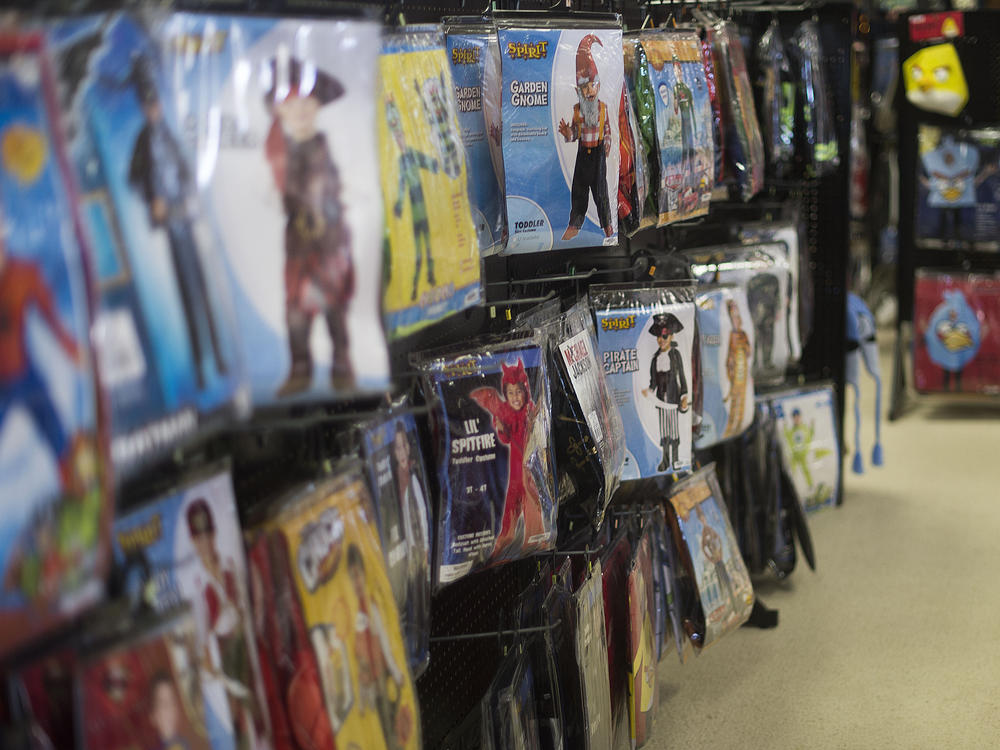Section Branding
Header Content
How Spirit Halloween takes over retail space this time of year
Primary Content
Updated October 5, 2021 at 11:53 AM ET
Spooky season has arrived, which means a few things: cooler weather, seasonal lattes and Spirit Halloween — the seasonal retailer that specializes in Halloween costumes and decorations.
Every fall, around 1,400 locations pop up in the United States and Canada. The retail chain is so ubiquitous, it's even become a meme:
Rachel Quednau is the program director for Strong Towns, an urban planning think tank focused on incremental development. She writes that Spirit Halloween's business model is based on utilizing otherwise unusable retail space.
"Today's Spirit is pretty much a bottom-feeder business that works only at the expense of other stores," Quednau writes. "If there weren't vacant storefronts, this business wouldn't exist."
When massive retail stores go out of business, it's not easy to find tenants to replace them.
The result: Those old Kmart and Toys R Us buildings can sit empty for a long time. This works in favor of Spirit Halloween, which looks for sites with anywhere from 5,000 to 50,000 square feet of space.
The company signs short term leases, sells its Halloween gear and crawls back into its coffin for next year.
This story originally appeared on the Morning Edition live blog.
Copyright 2021 NPR. To see more, visit https://www.npr.org.

